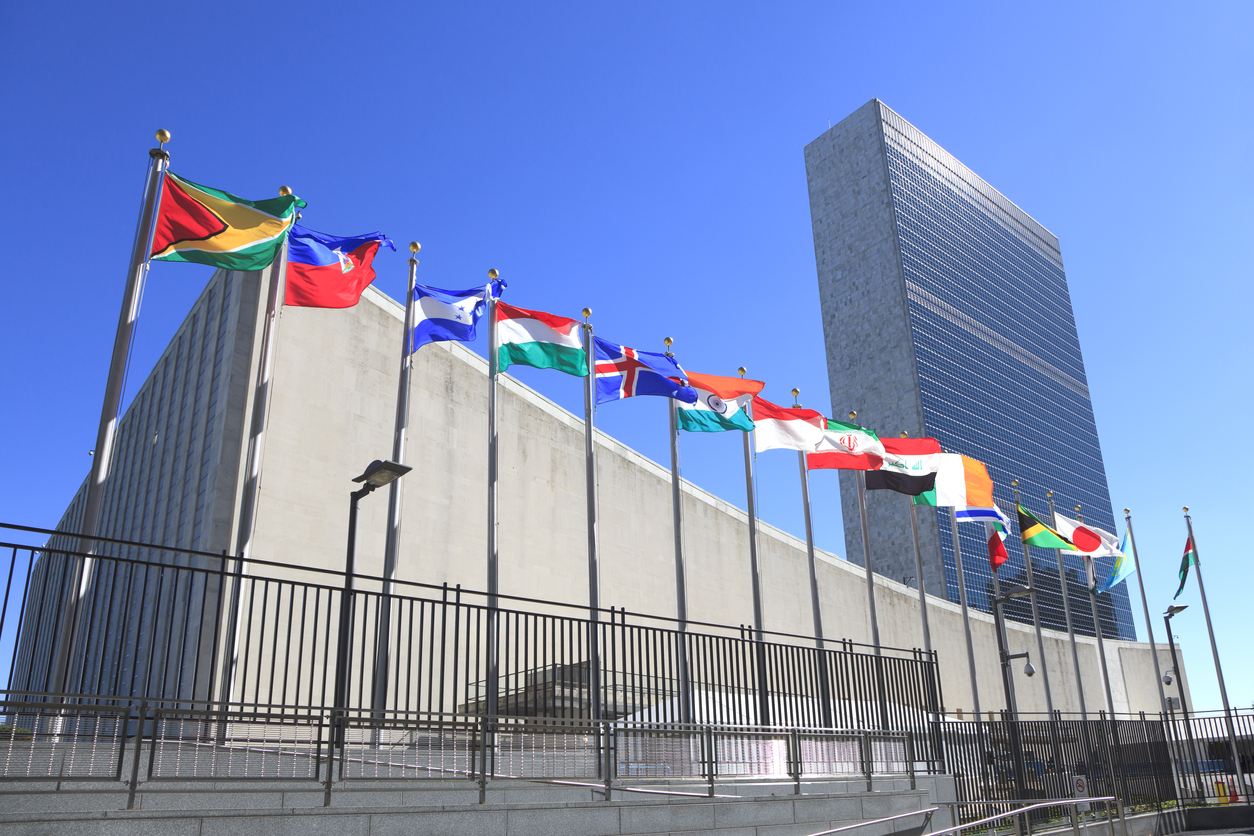The 75th anniversary of the Universal Declaration of Human Rights has inspired fruitful dialogues on the trajectory of the human rights field. I suggest we complement them with forward-looking discussions concerning the next 75 years. What emerging topics will the human rights movement need to tackle in order to remain relevant for the remainder of the century? What signals of change can be identified in the ideas and tactics of the most innovative actors in the field, from youth climate activists to Indigenous peoples to artists’ collectives to a new generation of social movement lawyers?
This is what futures-thinking experts call “looking back to look forward”: examining how much things have changed in the past in order to appreciate how radically they will change in the future. At a challenging time for global human rights, it is particularly important to engage in a collective exercise to imagine and prepare for alternative futures for a world that will be marked by the profound consequences of contemporary developments like climate change and the rise of technologies like artificial intelligence and gene editing. This is precisely the goal of the Future of Rights and Governance (FORGE) program, which we recently launched with colleagues from the NYU Center for Human Rights and Global Justice and more than 160 researchers, activists, artists, scientists, and other thinkers and doers from around the world who joined us at the first annual FORGE conference in New York.
It seems to me that the first step towards a generative dialogue about the past and the future is to get over the debate on the supposed demise of human rights. A whole ten years have passed since the publication of Stephen Hoopgood’s book on the “endtimes of human rights,” which led to a lively discussion in Open Global Rights and elsewhere. While Hopgood put his finger on real issues of inequality and strategic stagnation within the human rights movement, his argument rested on thin empirical evidence and had important analytical blind spots, as I argued in my contribution to the debate at the time and others like Gráinne de Burca and Kathryn Sikkink have shown more thoroughly since. A decade later, what seems to have stuck is the book’s provocative title rather than its more nuanced arguments. A number of subsequent contributions to the debate—especially by scholars from the Global North with limited knowledge of the diversity of human rights practices around the world—joined the end-times chorus and launched a trend that Ruth Teitel usefully called “endism.”
We have been there before. Thirty years ago, Francis Fukuyama infamously proclaimed the end of history. Interestingly, the end he had in mind included the triumph of (liberal) human rights and democracy. The fad his work unleashed would later be criticized as endism as well. With the benefit of hindsight, endism looks like a cyclical and predictable occurrence, as inevitable as it is short-lived. It is a tendency firmly anchored in human psychology. “History, it seems, is always ending today,” concluded the authors of a classic study of human cognitive biases about time.
I suggest we turn the page and embrace the end of endism in human rights. The best available evidence shows that, after ten years, the end of human rights has failed to arrive. In explicit contrast to the thin evidence marshaled by end-times proponents, a recent quantitative study by Geoff Dancy and Christopher Fariss shows that people around the globe continue to employ human rights language and norms. They find that the popularity of human rights language, as measured by online searches, “is just as popular as it was a decade ago. In fact, today people search for information on human rights far more than they search for other political concepts like social justice, inequality, or national security.” Contrary to the critics’ view of human rights as an elite project centered on the Global North, Dancy and Farris’s data show that peak interest in human rights is to be found in places and moments of human rights emergencies in the Global South. Similarly, a recent global survey conducted by the Open Society Foundations showed that the large majority of respondents (72%) expressed a positive view of human rights, especially in the Global South.
None of this is to deny the formidable challenges that human rights values and norms face in a time of wars, ecological emergencies, technological disruption, democratic backsliding, geopolitical tension, and rising inequalities. Nor do I mean to say that the movement’s traditional concepts, tactics, and narratives are adequate to deal with those challenges. Indeed, I’ve suggested that they need to be considerably revamped if human rights are to remain relevant in the next decades.
Declaring the end of endism is a small but important step in this direction. By reorienting our attention from high-level proclamations to specific discussions about the richness, messiness, and rapidly changing reality of human rights on the ground, human rights actors free up precious mental space to develop new ideas and responses. By loosening the grip of fatalism that endism tends to produce, we open up emotional space to mobilize with the benefit of hope.
Recentering hope and looking towards the future would be a helpful way to celebrate the 75th anniversary of the Universal Declaration of Human Rights. The response to end-times pessimism is not facile optimism. As Rebecca Solnit writes, “Hope is not optimism. Optimism assumes the best, and assumes its inevitability, which leads to passivity, as do the pessimism and cynicism that assume the worst.” While we feel the pain of the loss of human and non-human lives and livelihoods around the planet, we also know that “to hope is to recognize that you can protect some of what you love even while grieving what you cannot—and to know that we must act without knowing the outcome of those actions.”

